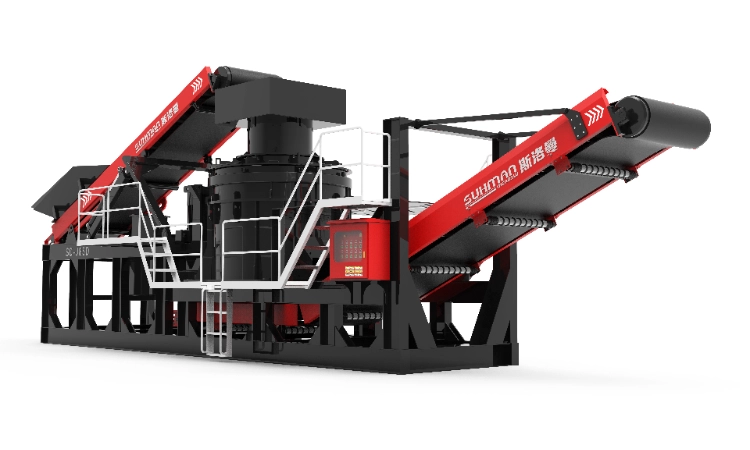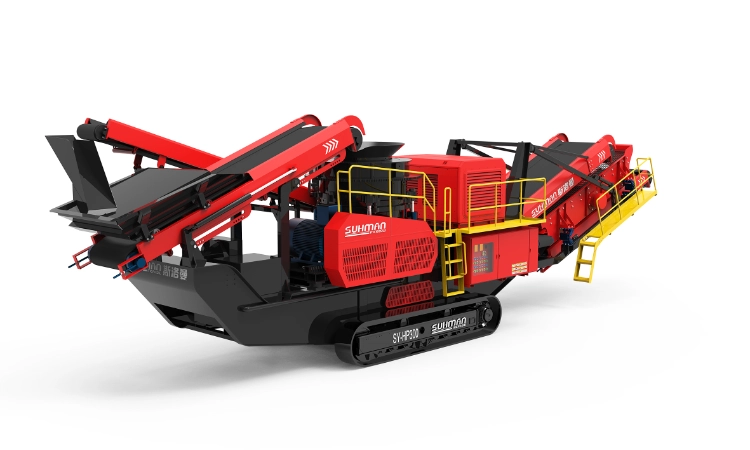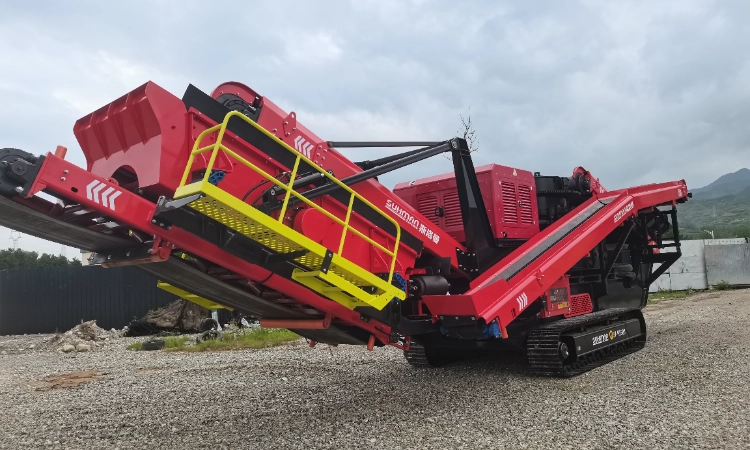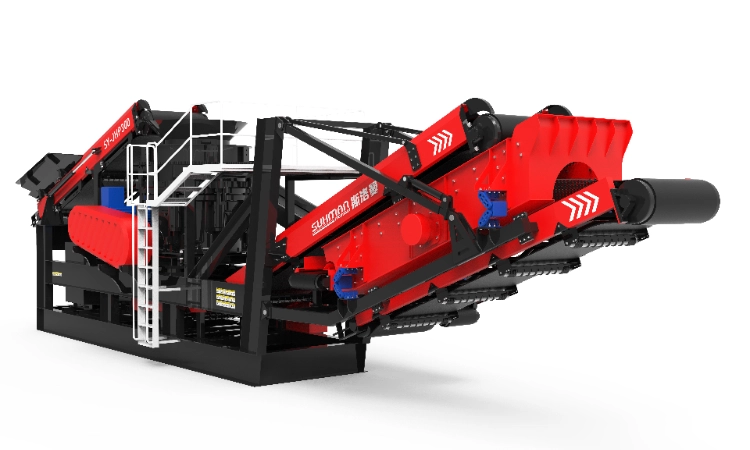The working principle of the impact crusher can be simply described as a stone crushing process based on impact and collision. During operation, stones naturally fall onto the high-speed rotating impeller. The impeller accelerates the stones and throws them out at high speed, causing them to collide with other stones that are falling naturally. This collision forms a vortex, and as the stones return, additional crushing takes place, further reducing the size of the material. As a result, the wear on the crusher's counterattack plate is minimized during operation.
The stone material falls directly onto the high-speed rotating turntable at the top of the machine. Under the influence of centrifugal force, it collides with other stones that are distributed around the turntable in an umbrella shape. This high-speed impact results in intense crushing. After the collision, the stones form a vortex motion between the turntable and the casing, leading to multiple additional impacts, friction, and crushing. The material is then discharged from the bottom of the machine. This process creates a closed loop, where the material is continually subjected to impact and screening until it reaches the required particle size. The final particle size is controlled by screening equipment.







 +8613655550150
+8613655550150
 Inquiry Now
Inquiry Now
.png)
.png)
.png)
.png)

.png)
.png)







